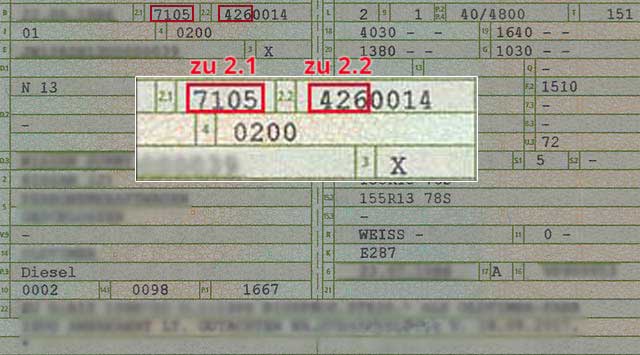Support: +43 (0) 699 10074593
You see retail prices. Please log in to see our B2B prices.
Wheel Protection Fitting Instructions
Please read this manual carefully before mounting the wheel protector and view our official fitting movie for help.
TRIMS4RIMS have an L-shaped design and can be mounted on rims with round wheel edges as well as on rims with a flat shaped edge. The minimum width of the mounting surface should not be less than 6mm.
 RIMBLADES are asymmetrically C-shaped and can be mounted in either direction, depending on the shape of your wheels and your desired width of the visible edge. Before attaching, check which side of the rimblade is better for you. Our unique design fits most alloy wheels, although we recommend Rimblades especially for rims with round shaped edge. The minimum width of the mounting surface should not be less than 6mm.
RIMBLADES are asymmetrically C-shaped and can be mounted in either direction, depending on the shape of your wheels and your desired width of the visible edge. Before attaching, check which side of the rimblade is better for you. Our unique design fits most alloy wheels, although we recommend Rimblades especially for rims with round shaped edge. The minimum width of the mounting surface should not be less than 6mm.
 SCUFFS are L-shaped and are specially designed for wheels with flat shaped edge. Scuffs can be mounted on all rims with a flat lip / flat mounting surface. The minimum width of the mounting surface should not be less than 6mm and must be level. Scuffs have a guide lip at the bottom so you can easily attach them to your rims in a perfect circle.
SCUFFS are L-shaped and are specially designed for wheels with flat shaped edge. Scuffs can be mounted on all rims with a flat lip / flat mounting surface. The minimum width of the mounting surface should not be less than 6mm and must be level. Scuffs have a guide lip at the bottom so you can easily attach them to your rims in a perfect circle.
Rimsavers are L-shaped and are suitable for wheels with flat or slightly rounded rim edge. The minimum width of the mounting surface should not be less than 6mm and must be level. Rimsavers have a guide lip at the bottom so you can easily attach them to your rims in a perfect circle.
- All products are suitable for wheel sizes up to 22 inches. For larger rims you need 2 packs.
- Rim weights should not be mounted on the edge of the rim as they may affect the grip of the rim protector.
- The assembly should be done at +20 degrees C ambient temperature and in dry weather! The first adhesive strength (50%) is reached after 60 minutes, after 24 hours about 90% and after about 1 week 100%. We recommend avoiding speeds over 65kmh within the first 24 hours after installation. In colder outdoor temperatures, this period is extended. However, the tape was designed for mounting in cold weather.
- The wheel protector will poorly adhere to surfaces that have been coated with special rim care agents (e.g., nano-based cleaners, nano-polishes, waxes, PlastiDip, etc.). This coatings need to be fully removed prior attaching the wheel protector. Your rims can be coated again after assembly.
- The cleaning of the mounted Rimblades with acid cleaning agents is not recommended. Clean Rimblades with car shampoo and water. Wash your hands after using the wipes included in this kit or wear latex gloves.
- Check your wheel protectors regularly and replace if damaged.
Step 1:
For optimal assembly the preparation of the rim surface is very important and should not be underestimated! Remove all residues of silicone-containing rim cleaners and tire sprays completely. Wheels must be perfectly clean and degreased for proper installation. Rims and tires are often treated with nano-based silicone-based cleansers, waxes or conditioners. These also use car washes and car dealerships in the car wash. When changing tires, silicone-containing tire paste is also used. These agents can not be seen with the naked eye and seal the surface and have therefore bad impact on the adhesion. Such care products are difficult to remove from the rim and must be completely removed before installation. That's why we always recommend washing the wheels thoroughly with a grease-dissolving cleaning agent (such as a household oven cleaner or degreaser) before assembly so that all the media and sealants are removed from the rim. Your rims can be sealed again after the rim protection has been fitted and can be maintained further. Take the test: if you spray your rim with water and the water forms into drops on the surface, then your surface is sealed!
Wash and clean your alloy wheels thoroughly and dry them completely. It is advisable to clean the gap between the tire and rim with an air compressor after washing to completely dry the wheel edge and remove all water and moisture.
Step 2:
Clean the wheel edge where you will adhere the wheel protector with the supplied alcohol cleaning wipes. (label on the cloth: IPA WHEEL CLEANING WIPE).
Step 3: (not aplicable for Trims4rims))
Treat the wheel edge (area where the rim protector will adhere to your rims) with the supplied primer wipes (label on the wipe: 3M Automotive Adhesion Promoter). It is important that all contact points are treated with the primer. A thin film of the primer is sufficient (one time around the rim), if you rub too long back and forth, the primer dries and you would remove the applied primer again.
Drying time of the primer is 1 to 5 minutes, depending on the room temperature. After the primer has been applied and dried, the wheel protector must be fitted within 20 minutes. Because of the short working window of the primer it is advisable to perform the entire fitting procedure first on one wheel until step 6. After completing one wheel you can move on to the next one.
Step 4:
Stick the wheel protector to your rims. Please position the rim protection so on your wheel that the whole surface of the adhesive can be firmly attached to the wheel and that the area with the adhesive lies on the front side of the rim edge. To do this, remove the cover from the tape piece by piece as you progress. Use the edge of the rim as a guide for precise fitting. Press the rim protection with the groove evenly and firmly onto the edge of the rim until the beginning of the protector is reached. Do not yet remove the cover from the tape on the last approx. 4cm.
Important: Do not stretch the wheel protector but press it in its normal shape to your wheels.
The rim protector should lie flat and firmly on the rim over its entire width and length. Do not fit the rim protector on the tire! Make sure that the fitted wheel protector does not touch the tire as the tire bends when cornering and could push the rim protector off the wheel.
Step 5:
Now cover the two ends of the attached rim protector and carefully mark the correct cutting point - where the two sides of the tape meet. For a perfect joint on Rimblades Flex and Scuffs, we recommend to cut the rim protector about 1.5mm longer. We recommend to mark the top and bottom with a pencil so that you cut it exactly in a straight line. Now cut off the excess of the wheel protector exactly with a cutter or sharp pair of scissors. Now remove the last 4cm of the cover from the tape and press this last piece firmly to the wheel. The rim protector must not be fitted overlapped.
Step 6:
Finally press the rim protector piece by piece, evenly and firmly along its entire length and width to the edge of the rim, so that the adhesive can build up a firm bond with your rim over its entire surface. A cloth can help you to press the band evenly along the entire length of your rims. This step is very important because you only activate the full power of the adhesive by pressing firmly.
Step 7- (only aplicable for Rimsavers):
Stick with the supplied super glue from the tube the supplied covers for the cut onto the cut. Apply super glue to the back side of the cover and press the cover firmly to the cut.
Finished!
This wheel protection is of high quality and can be removed if necessary without leaving any residue. The best way to do this is to heat the band with a hot air blower and slowly pull it off the rim at a 45 degree angle. The products of Rimblades Ltd. use a rubbery tape from 3M. This is soft and can be easily removed if desired without damaging the surface. The adhesive residues go off easyest if you heat larger residues and then scrub these larger glue residues off. These go off similar to a bubble gum. Please only use a soft cloth, not that scratches on your rims arise. Smaller residues of glue can then be wiped off with isopropil alcohol. Please do not use nitro thinner, acetone or similar, which could damage your rim varnish.
 Some aluminum wheels can have an outer raised or uneven wheel lip or outstanding spokes that protrude the wheel lip- for such wheels our wheel protection with adhesion attachment is not recommended. This rim protector should not be mounted on rims with uneven edges.
Some aluminum wheels can have an outer raised or uneven wheel lip or outstanding spokes that protrude the wheel lip- for such wheels our wheel protection with adhesion attachment is not recommended. This rim protector should not be mounted on rims with uneven edges.
Important!
These rim protection products have been thoroughly tested and are designed to protect the surface of your alloy wheels in a low-speed impact. Please check your rim protection after a collision with the curb and replace it if necessary. Replacement protectors are available from us. We do not recommend the use of high-pressure cleaners if rimblades are mounted on the wheels.
The manufacturer Rimlades Ltd as well as its distributors take no responsibility or liability for any loss or damage caused by improperly assembled products as it is a Do It Yourself (DIY) product. Use and use at your own risk!
For further questions please contact us at: [email protected]
Or by phone: +43 699 10074593
List of common fitting errors:
Here we show the list of common assembly errors for you to avoid:
1) The protector was not pressed on with enough force or the tape was not pressed evenly and over the entire surface of the tape (along the entire length and width) to the rim surface. The tape must really be firmly bonded on the whole surface to the wheel. If there is insufficient adhesion somewhere, water and dirt can get behind the adhesive and starts to loosen it.
2) The rim protector was so positioned on the rim that not the whole surface of the adhesive is in firm contact with the rim. Please position the rim protection so on the wheel that the whole surface of the adhesive will be firmly attached to the rim and that the area with the adhesive lies on the front side of the wheel edge and not in the gap between the tire an the wheel.
3) Wheels were not really clean. If rims have been sealed with special rim care products (for example nano-based cleaners, nano-polishes, waxes, tire shine, tire-mounting paste, etc.) they must be properly cleaned before installation to remove the entire sealant. Such care products are difficult to remove from the rim, so we recommend washing each rim with a strong degreasing cleaner prior fitting the rim protector (for example a home-style oven cleaner or degreaser works fine). Your rims can be sealed again after assembly and continue to be maintained as usual.
4) Wheels on new vehicles and factory new rims can be sealed from factory. Such wheels must be cleaned accordingly prior fitment of the rim protector to remove all care products.
5) The rim protector was placed too far over the edge of the rim and the distance to the tire is too low. When cornering the tires bend and so they can push the rim protection of the wheel.
6) Uneven and too economical application of the primer or after applying the primer too short or too long waited with the assembly of the wheel protector- the time window after the applied primer is only max. 20 min. Applying the primer in a thin film is sufficient (once around the rim), if you rub too long back and forth then the primer dries out and you wipe off the applied primer.
7) Too high speeds immediately after installation. The first adhesive strength (50%) is reached after 60 minutes, after 24 hours about 90% and after about 1 week 100%. We recommend avoiding speeds over 65 km/h within the first 24 hours after installation. In colder outdoor temperatures, this period is extended.
8) Rimblades were mounted in wet and or cold weather or exposed to water immediately after installation. The assembly should be done at +20 degrees C ambient temperature and always in dry conditions. In cold temperatures, the rims should be heated before mounting. After the applied primer, do not heat the rims anymore because the heat could damage the primer.
9) The adhesive was touched with the hand or the adhesive was in contact with the surface and removed again. The adhesive can be attached only 1x! Once the adhesive comes in contact with the rim for the first time the rim protector can no longer be repositioned or pulled off without damaging it. Position the wheel protector well thought and once in contact with the wheel do not try to move it and just press it on firmly.
10) Tire care products and tire shine must be washed off the rims because they will disable proper adhesion.
11) The wheel was driven without knowing against a curb or pothole that has damaged the tape in one place.
12) The rim has a too narrow rim edge or an uneven edge with outstanding rim spokes and therefore the rim protector can not fully fit tightly to the wheel.
13) The adhesive was touched when shortening the rim protection and so it has not built up the correct adhesion in the last few centimeters. Therefore remove the last few cm of the protective film only after shortening the rim protection.
14) The rim protection was mounted overlapped. The rim protection must not be mounted overlapped, both ends should rest against each other.
15) The rim protector was mounted on the tire. The rim protection must be mounted on the edge of the wheel and not on the tire.

